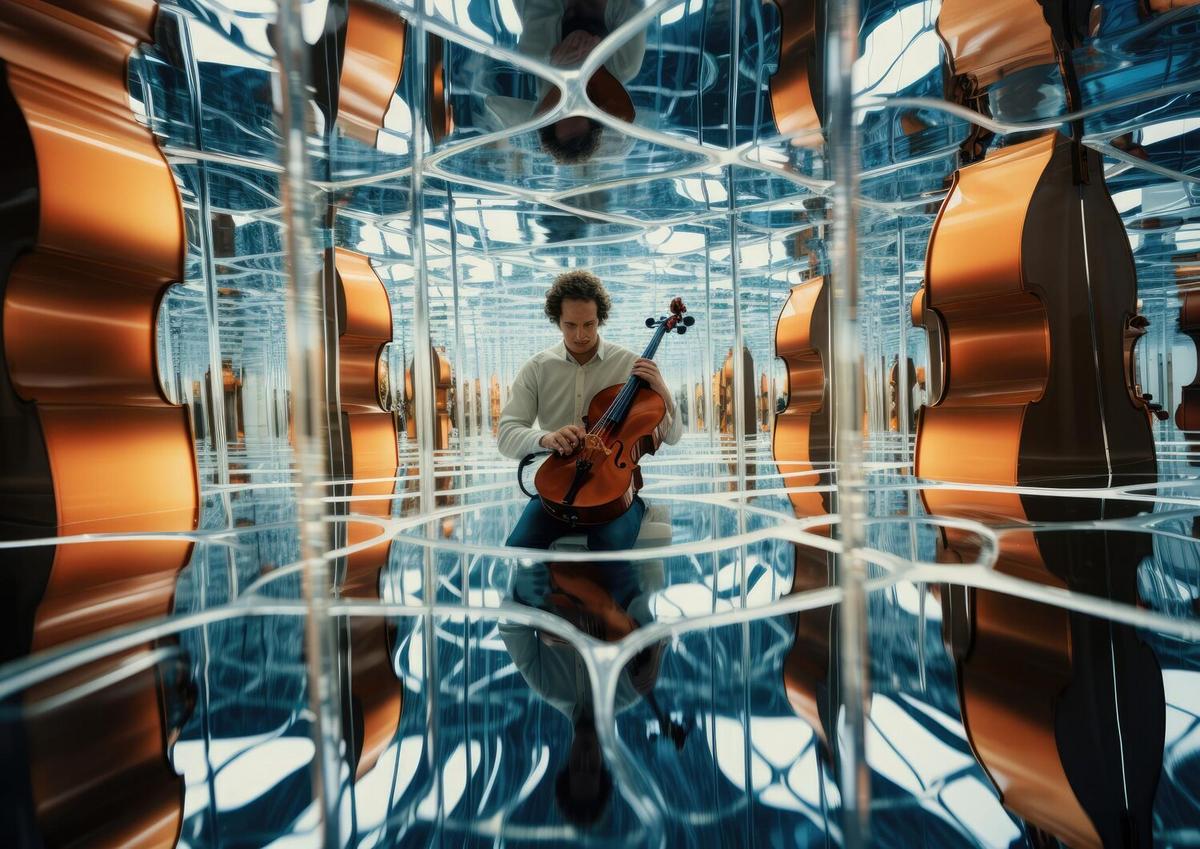As technology reshapes our world, the fusion of artificial intelligence (AI) and contemporary art has emerged as a dynamic field of exploration. This intersection challenges traditional boundaries and invites artists and technologists alike to rethink creativity and expression.
The convergence of AI and contemporary art is not just a fleeting trend; it’s a profound shift that is redefining how art is created and perceived. The integration of algorithms into the artistic process allows for new forms of expression and innovation. As AI becomes more sophisticated, artists are leveraging its capabilities to push the boundaries of creativity.
AI’s Role in Artistic Creation
AI’s contribution to art ranges from data-driven art installations to generative art pieces, where algorithms assist in creating intricate designs that might be impossible to conceive manually. According to a study published in Tate, AI-generated art has gained significant attention, with exhibitions showcasing how machines can mimic or even enhance human creativity.
“AI is not merely a tool but a collaborator in the creative process,” says Dr. Laura Smith, a renowned curator in digital art.
Statistics and Research
Recent statistics from Art Basel and UBS’s Global Art Market Report indicate a growing interest in digital art, with AI-driven pieces making up a larger share of the market. In 2021, sales of digital art increased by 20%, showcasing the sector’s expansion and acceptance.
Personal Anecdotes and Examples
Consider the experience of contemporary artist Alex, who uses AI to explore themes of identity and transformation. By feeding portraits into an AI model, Alex creates evolving art pieces that change over time, reflecting the fluid nature of human identity.
Actionable Tips for Artists
- Explore AI tools like deep learning algorithms to experiment with new artistic styles.
- Collaborate with technologists to gain insights into AI’s potential in art creation.
- Attend workshops and conferences to stay updated on the latest developments in AI and art.
Comparison Table
| Aspect | Traditional Art | AI-Integrated Art |
|---|---|---|
| Creation Process | Manual and skill-based | Algorithm-driven |
| Flexibility | Limited by artist’s skill | Enhanced by AI capabilities |
| Innovation | Gradual and skill-dependent | Rapid and technology-driven |
| Market Growth | Stable | Increasing |
| Accessibility | Requires formal training | Open to anyone with access to AI tools |
| Expression | Personal and subjective | Collaborative with AI influence |
| Cost | Material-dependent | Technology-dependent |
| Audience Reach | Traditional art spaces | Digital and global platforms |
FAQ
How is AI used in contemporary art?
AI is used to generate new art forms, assist in the creative process, and analyze patterns and trends in art.
Can AI replace human artists?
AI serves as a tool and collaborator, not a replacement for human creativity.
What are some popular AI art tools?
Tools like RunwayML and DeepArt are popular among artists for AI-driven projects.
Conclusion
The intersection of AI and contemporary art offers a fascinating glimpse into the future of creativity. As artists and technologists continue to collaborate, the possibilities for innovation are limitless. Whether you’re an artist or an enthusiast, embracing this technological shift can open up new avenues for expression and appreciation. Explore, experiment, and engage with this evolving landscape to fully appreciate the potential of AI in art.




Leave a Reply